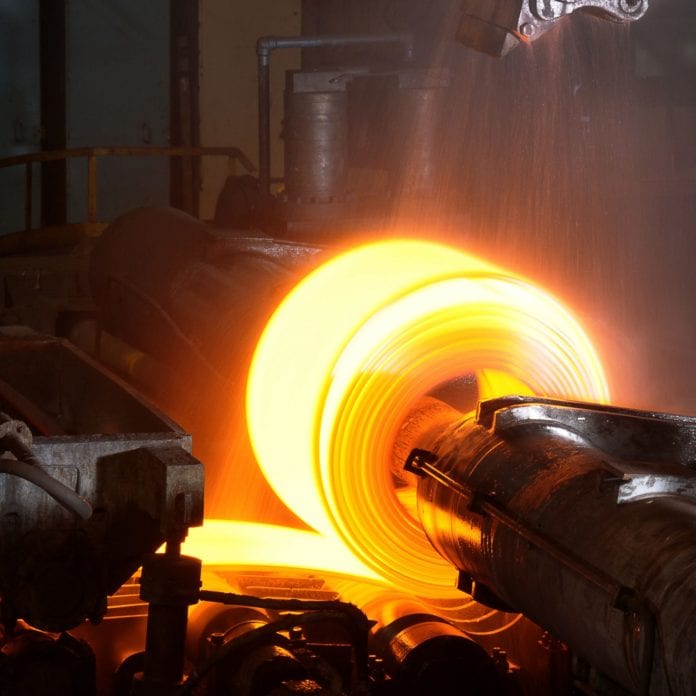Bosch provides business rules management to ThyssenKrupp factory
ThyssenKrupp, a German conglomerate corporation, found that its leading steel division needed to replace the models it used to manage the production of various grades of steel. To do this, it needed an easy-to-integrate and design solution that could be rolled out step by step. The company turned to Bosch to help make its steel production processes more streamlined and optimized, according to a case study provided by IoTOne.
ThyssenKrupp Steel Europe has been using its automation systems to manage the whole production process at its company steel plant using algorithms that map the functional relationships across all stages of the steel production process. However, according to Bosch, another German-based manufacturing company, there were a host of other changeable factors that influence the quality of the product that needed to be factored in the rules and formulas. What ThyssenKrupp Steel Europe was looking for was a suitable piece of software to fulfill this rules-based management function.

The steel producing company ended up turning to Bosch Software Innovations’ Visual Rules – Business Rules Management system for transparency in modeling its steel formula.
Some background on producing steel
Originally, the formulas for producing different grades of steel were programmed in one of the steel plants and implemented in a system as part of the application code. The other plant had access to the rules only in a compressed data form.
This made implementing any changes to the formulas in the applications and adjusting the file structures very difficult. ThyssenKrupp Steel Europe wanted to replace all its applications without disrupting operations – which meant a step-by-step process spanning a period of several years. Its priorities were to invest in a “future-ready product” to create a uniform standard for both plants over the coming years.
Implementing the rules-based solution
Due to the fact that the company’s controls run in a real-time environment and are event-driven with a calculation Takt (rate at which products or services should be produced to meet the rate of customer demand) of as little as one second, it was particularly important that access to the content of the database be fast. This consideration led ThyssenKrupp to decide to relocate the database access to its C# environment.
Consistency and visibility, key elements of IoT
According to Bosch, modeling the rules using Visual Rules provided ThyssenKrupp with a solution for the production of various grades of steel. Implementation is underway for all of the rule- and formula-based knowledge that will serve to manage processes and aid decision making in the production process.

An essential element to Bosch’s solution is that future changes to production requirements – production method, special treatments, special conditions to be respected, etc. – will be easily accommodated and that the path to a steel product tailored to customers’ needs be expedited. In the case of a new steel formula for a new product within an existing product family, the production specifications will be generated automatically; guaranteeing a high level of consistency in the production techniques employed, according to Bosch.
Benefits of a uniform standard
Here are the benefits to using a streamlined rules-based approach, according to Bosch.
- Consistent modeling increases the transparency of formula rules and agility in implementing changes to production specifications:
- Rules models are and will remain easy to modify;
- Graphic modeling keeps even complex production specifications comprehensible to industry specialists; and
- Subject-specific experts (e.g. metallurgists) can be involved in the application of rules.
- On completion, each project has access to consistent and up-to-date documentation relating to the rules and data models,
- Visual Rules helps improve quality through scenario-based testing and a wide-ranging pool of test scenarios.
Deployment
Since the beginning of the rollout phase in mid-2014, metal specialists have been able to create the steel formula rules themselves. Only the administration of the system itself calls for an information technology expert. This division of responsibilities between industry specialists and IT experts opens up the possibility of involving industry specialists with no knowledge of programming in the future.
Savings, as compared to the previous solution, according to Bosch:
- Scenario-based testing: four-times the savings;
- Graphic modeling and logical encapsulation of rules: three-times the savings; and
- Documentation of formulas: available for the first time.
What is next to come
ThyssenKrupp plans to employ the BRM system in other areas of its operations, including incident management in its steel plants. The goal is a rules-based solution that will support production personnel in the case of any incident (quality and timing deviations) by supplying appropriate textual information and instructions.

